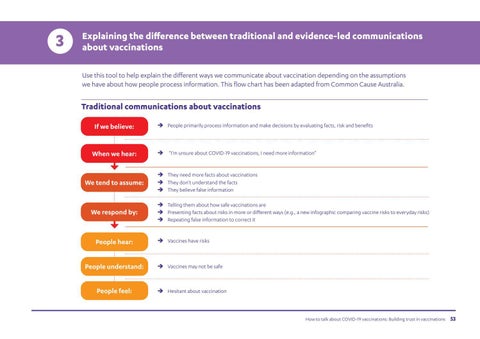3
Explaining the difference between traditional and evidence-led communications about vaccinations Use this tool to help explain the different ways we communicate about vaccination depending on the assumptions we have about how people process information. This flow chart has been adapted from Common Cause Australia.
Traditional communications about vaccinations If we believe:
When we hear:
We tend to assume:
We respond by:
People hear: People understand: People feel:
Î People primarily process information and make decisions by evaluating facts, risk and benefits
Î “I’m unsure about COVID-19 vaccinations, I need more information”
Î They need more facts about vaccinations Î They don’t understand the facts Î They believe false information Î Telling them about how safe vaccinations are Î Presenting facts about risks in more or different ways (e.g., a new infographic comparing vaccine risks to everyday risks) Î Repeating false information to correct it
Î Vaccines have risks
Î Vaccines may not be safe
Î Hesitant about vaccination
How to talk about COVID-19 vaccinations: Building trust in vaccinations
53










